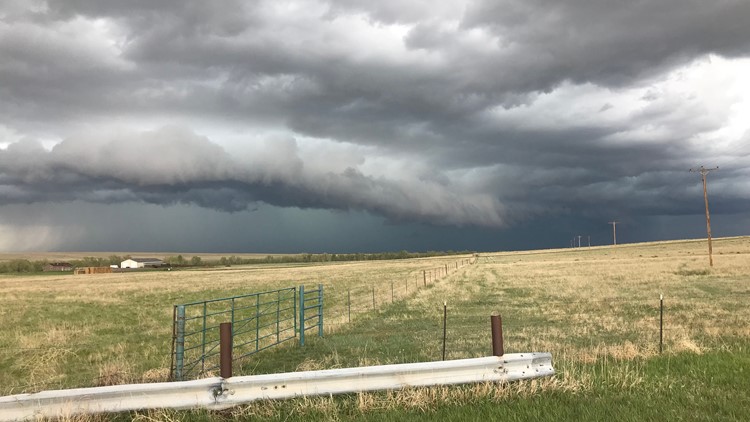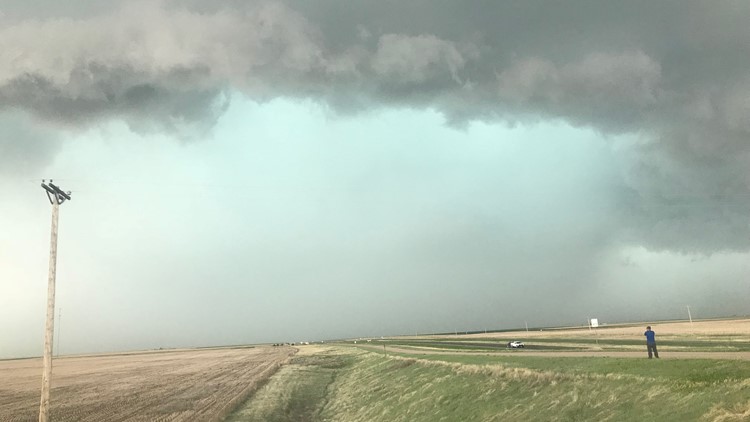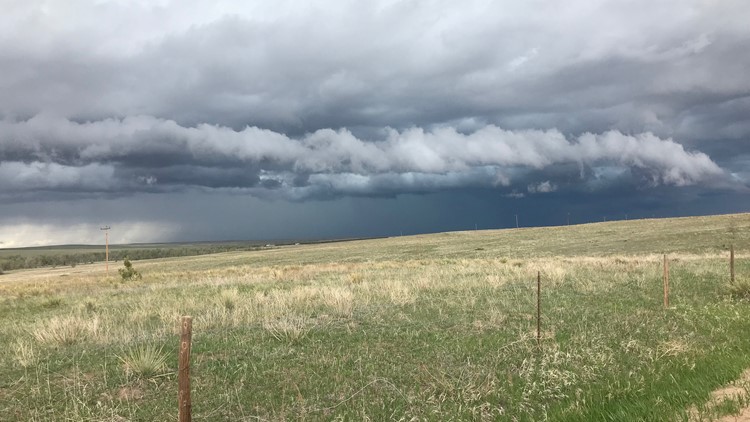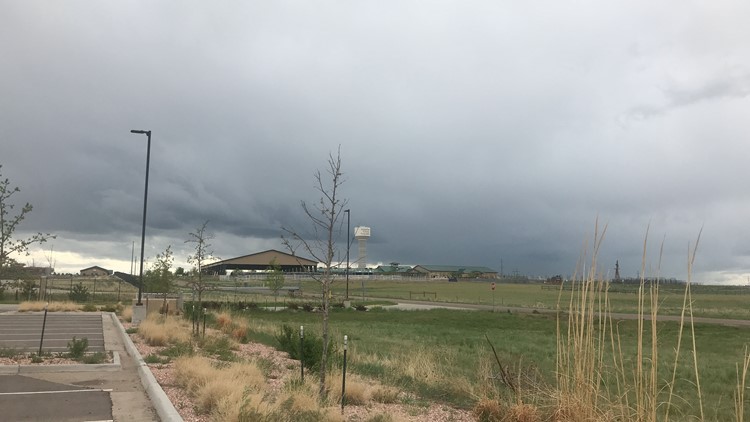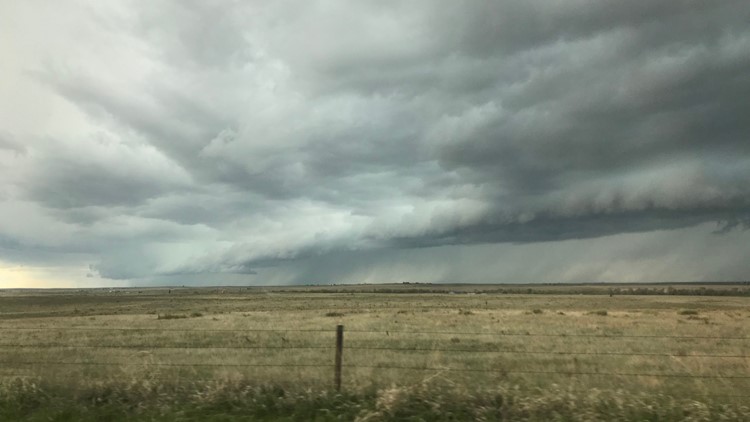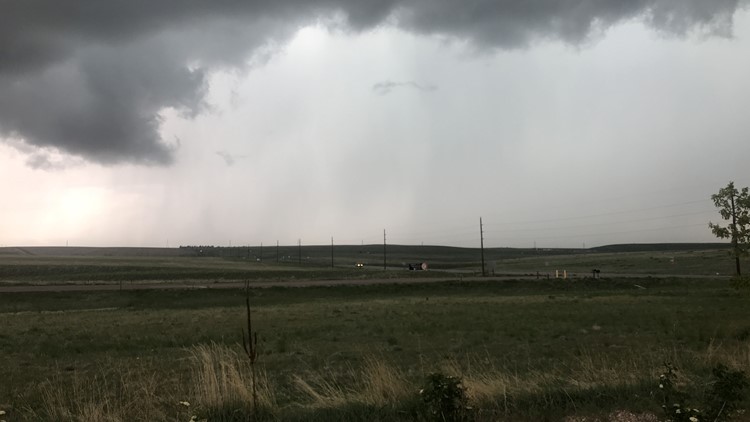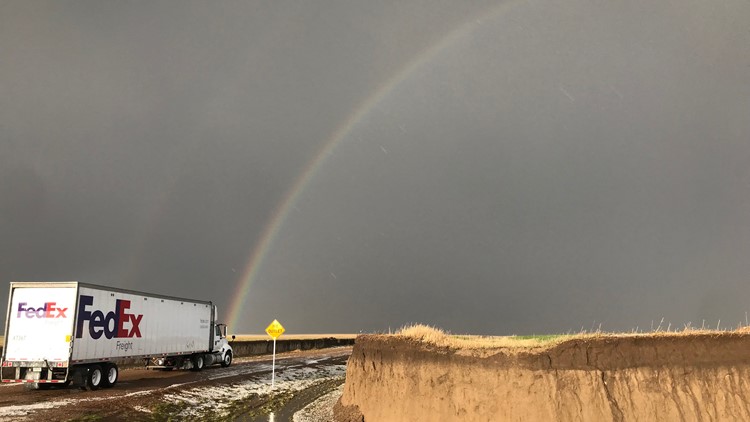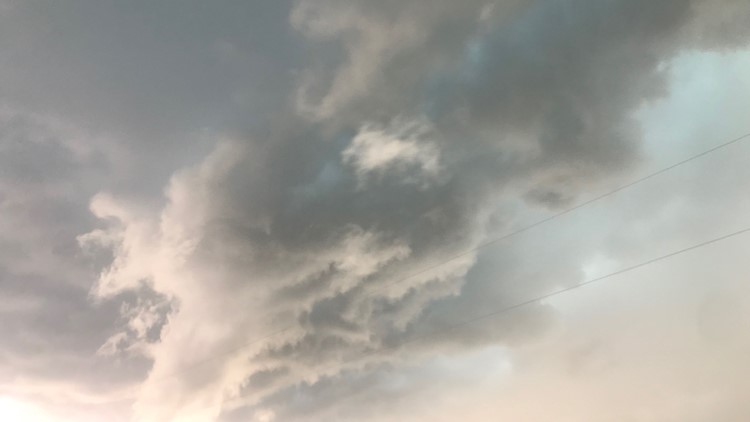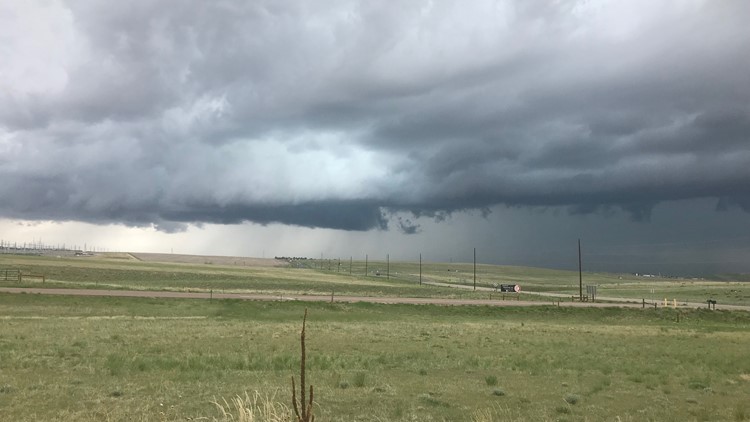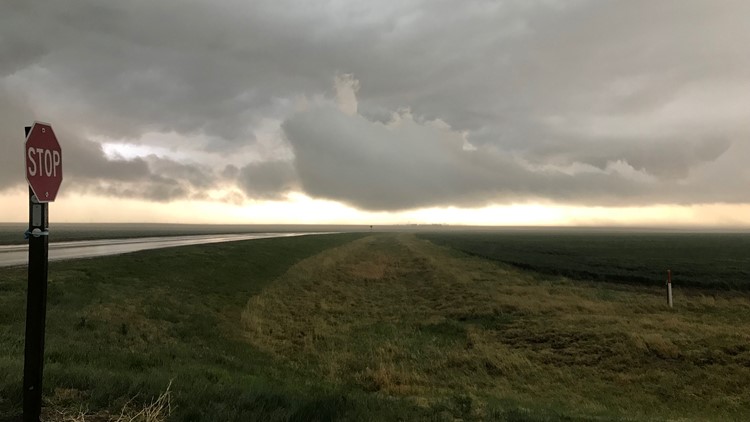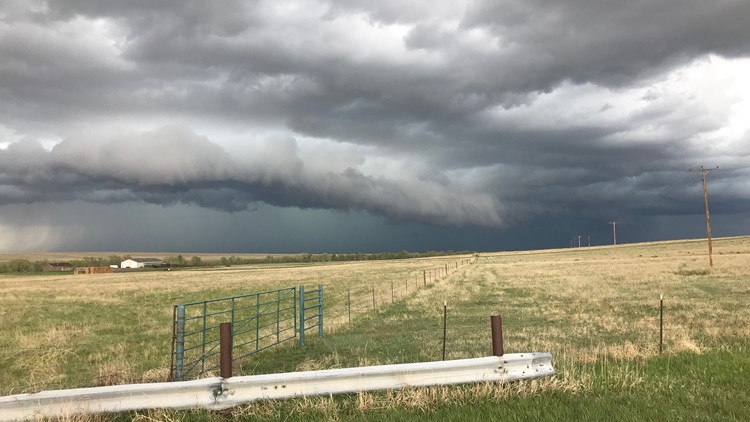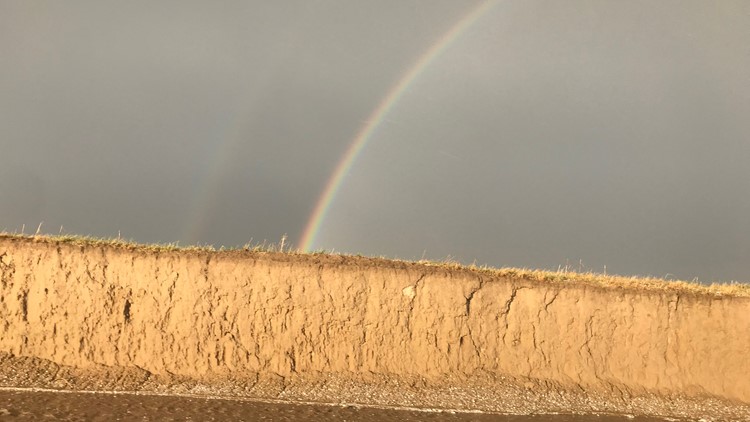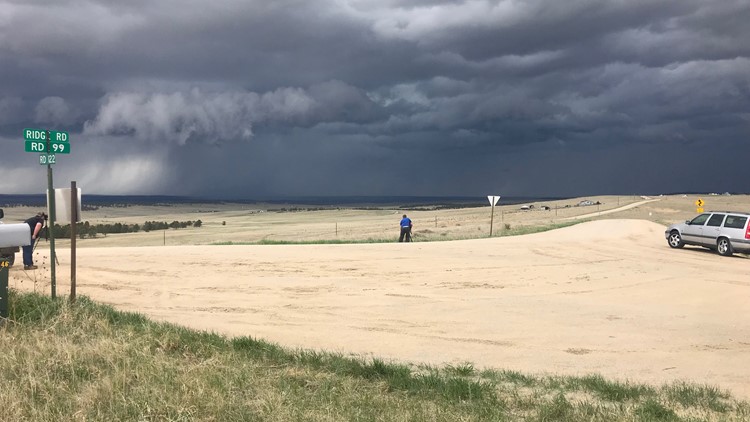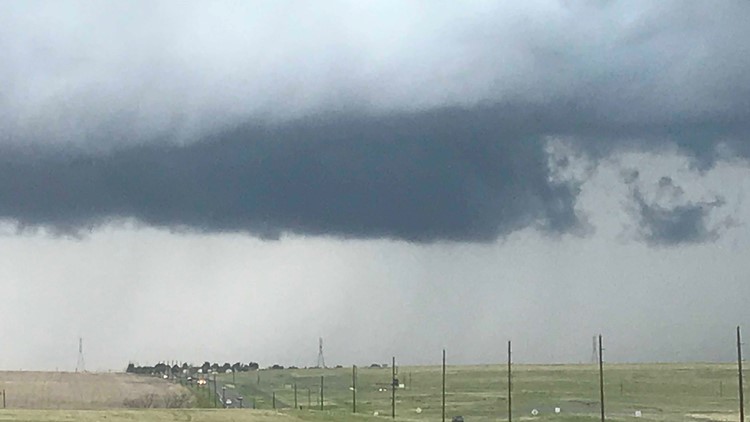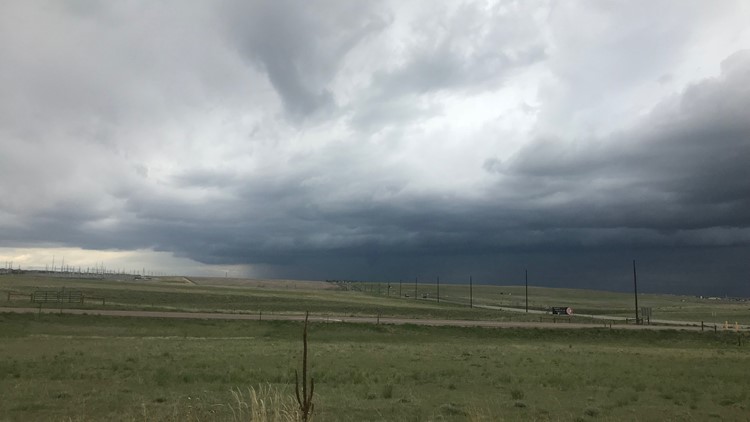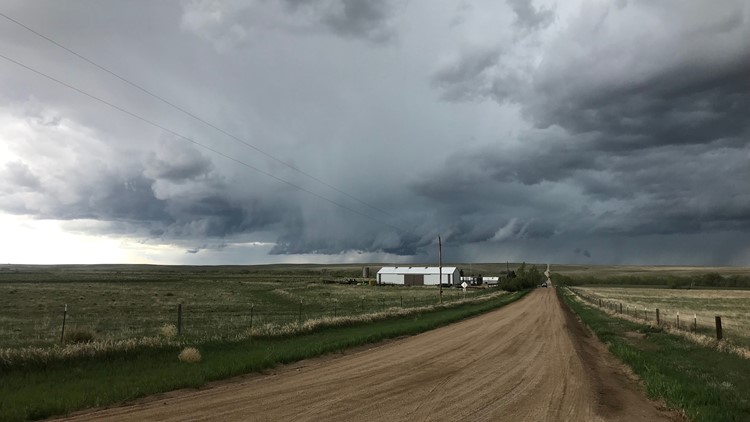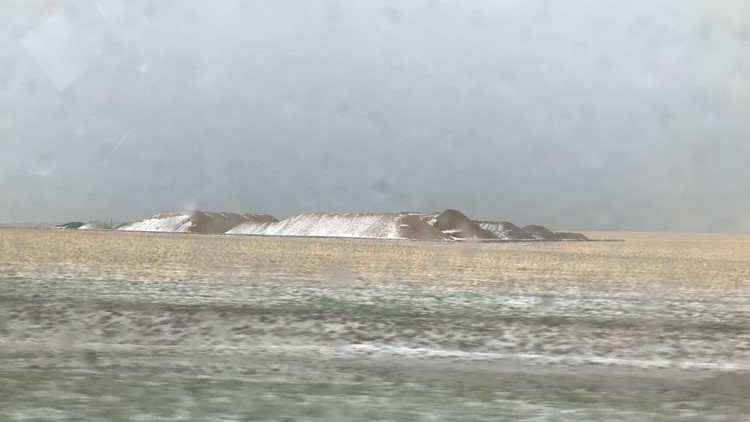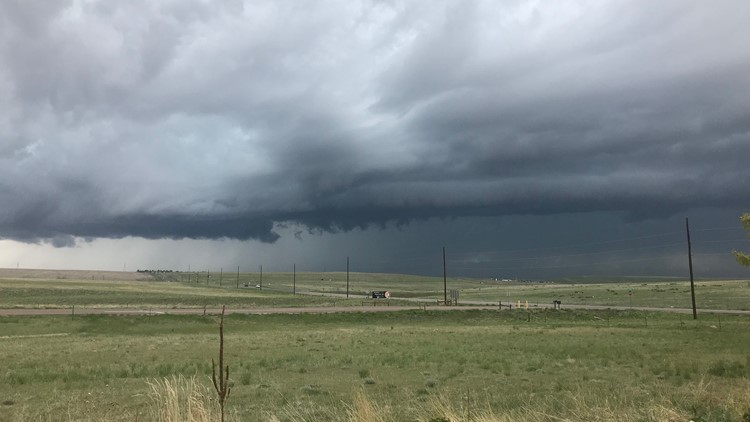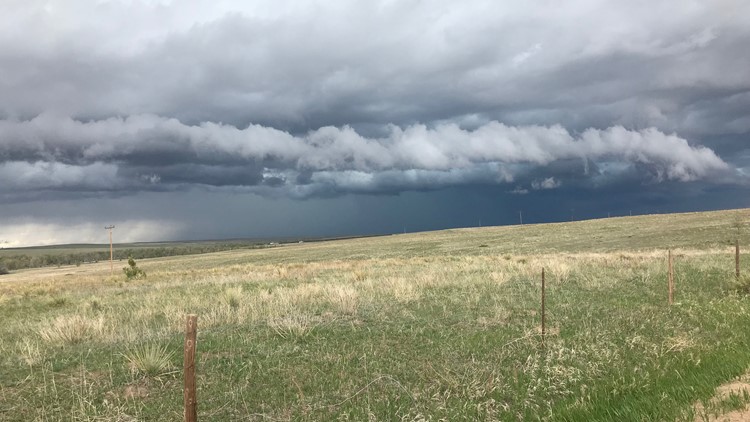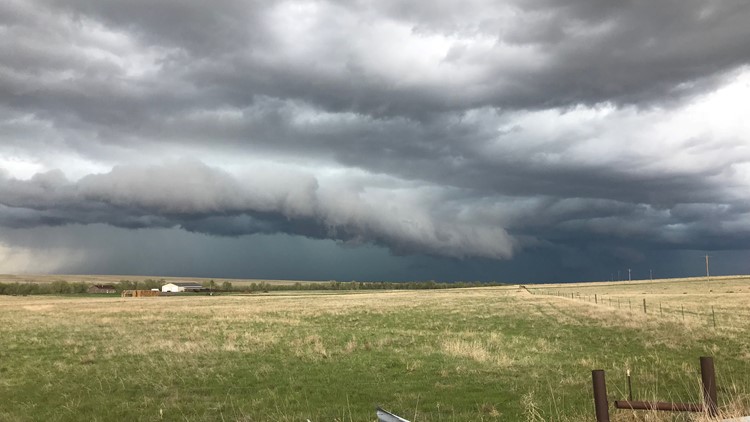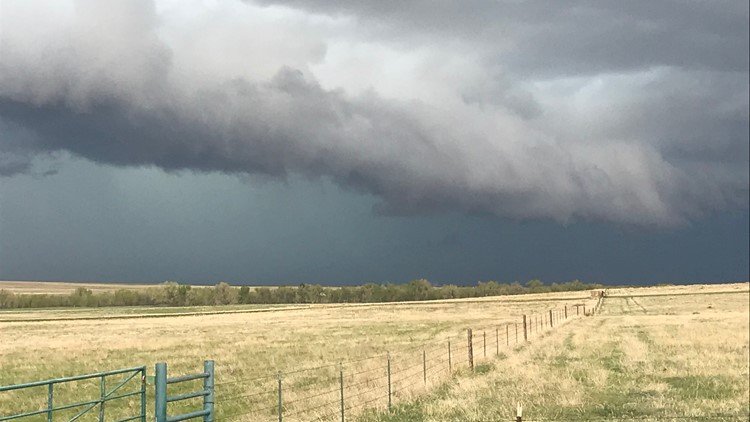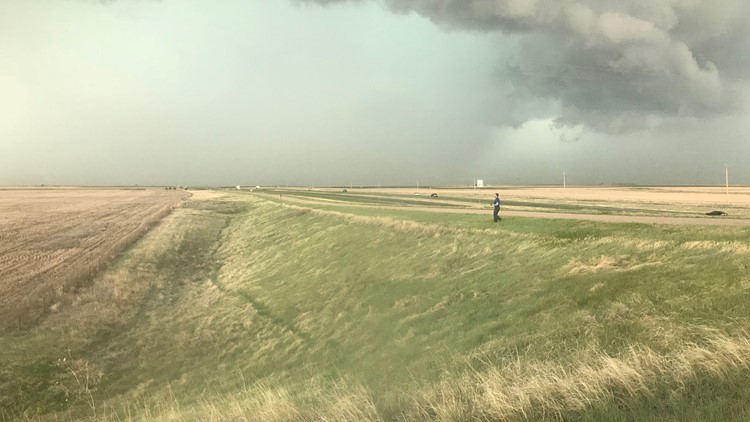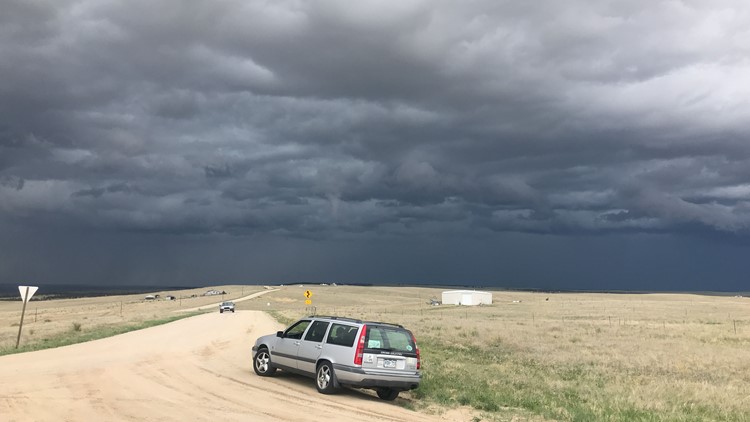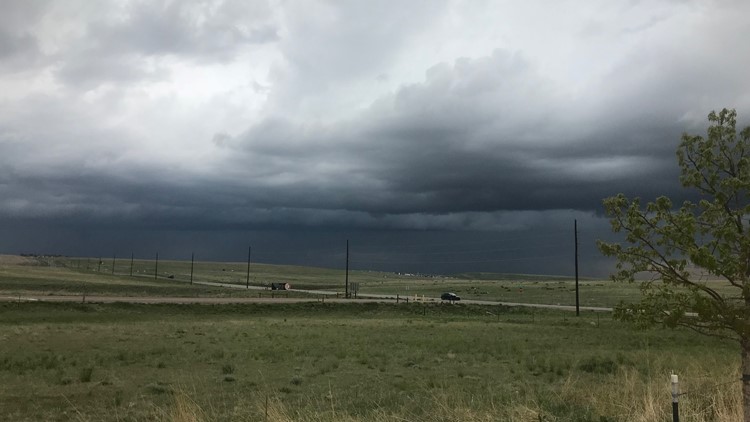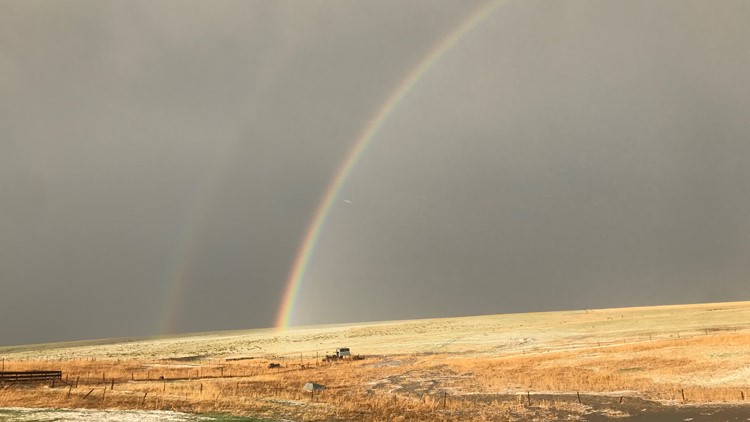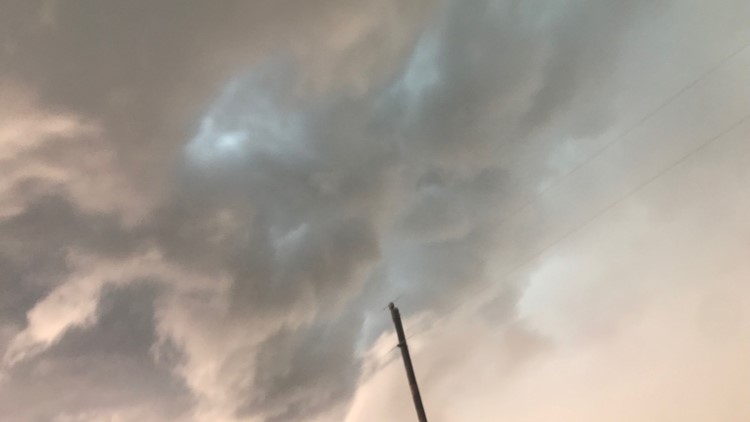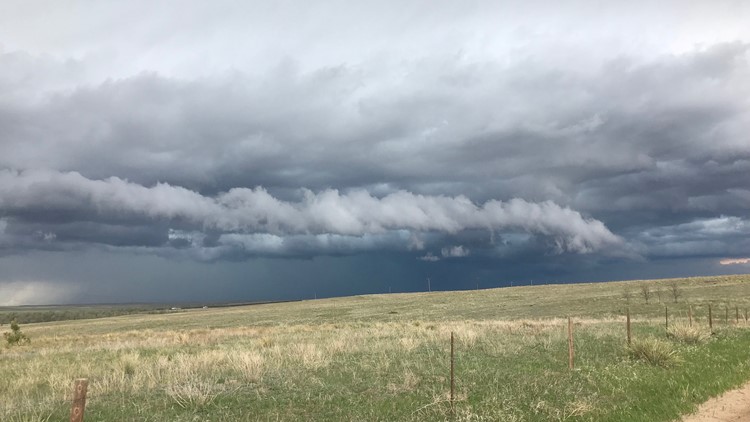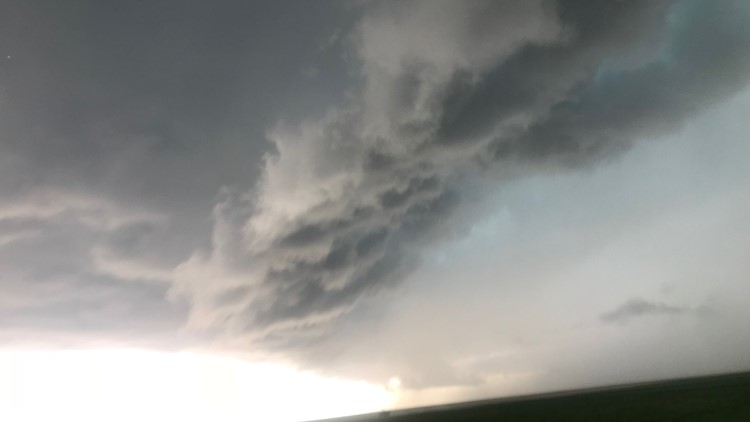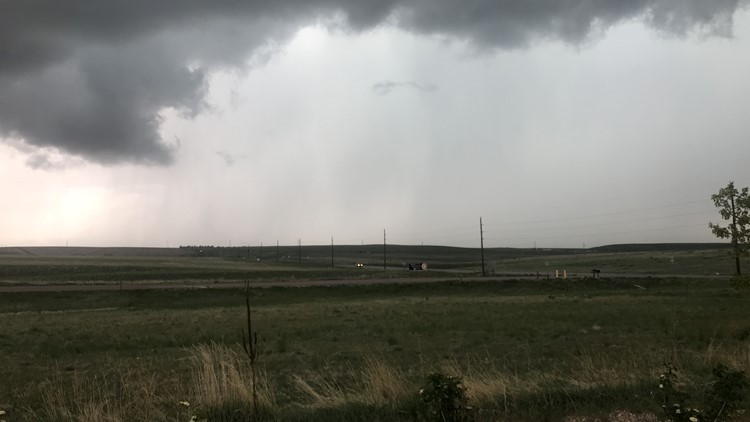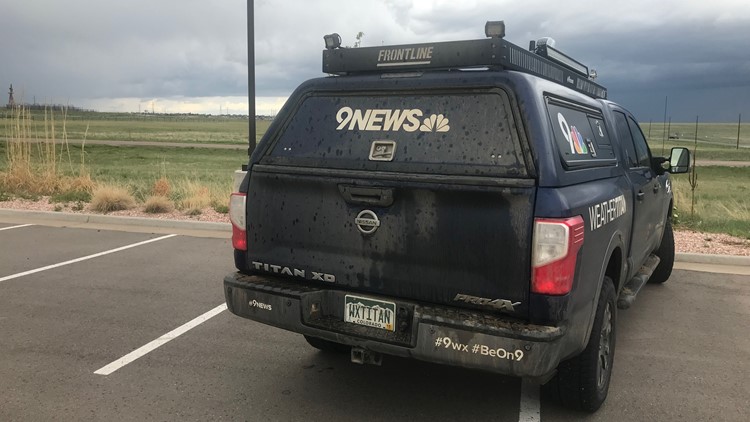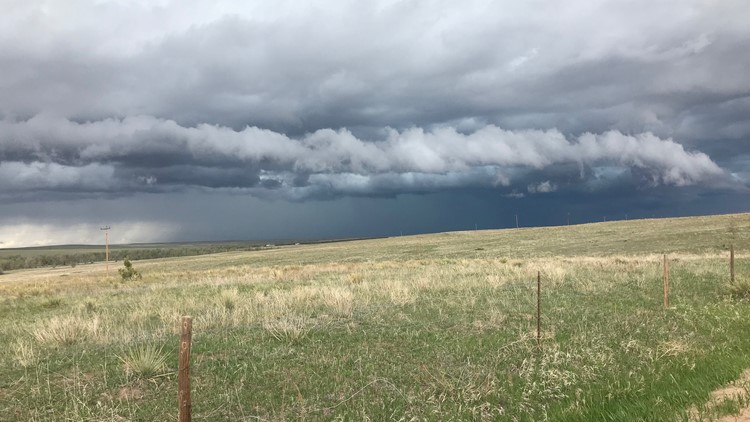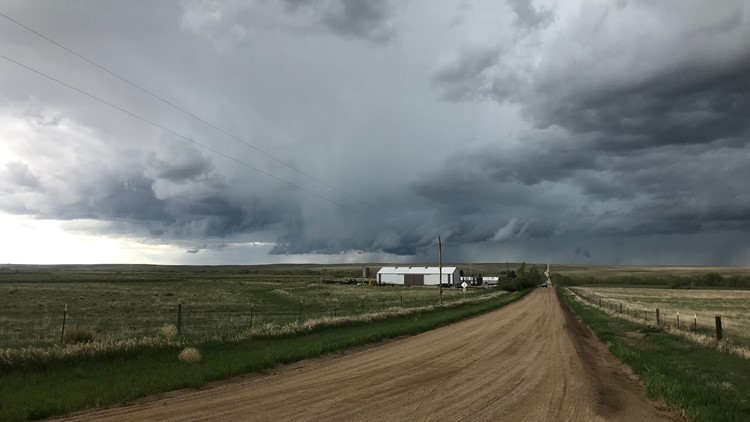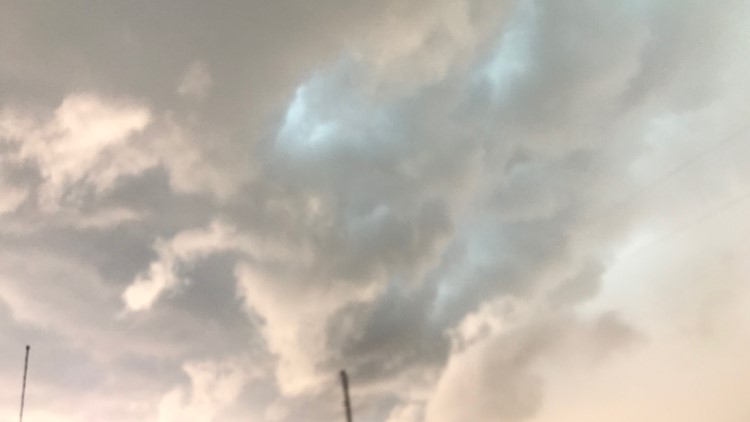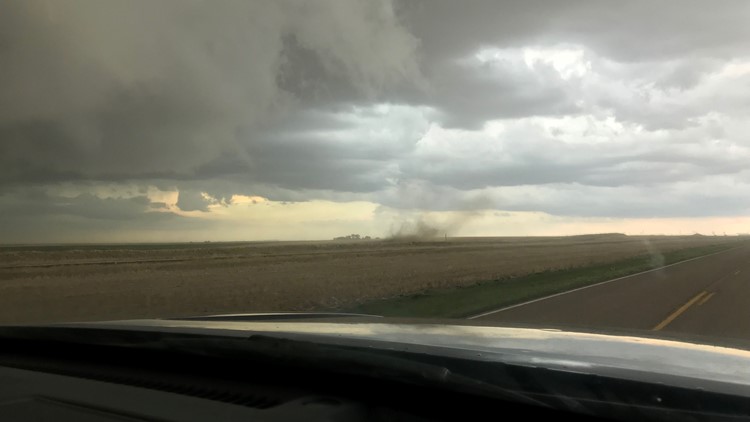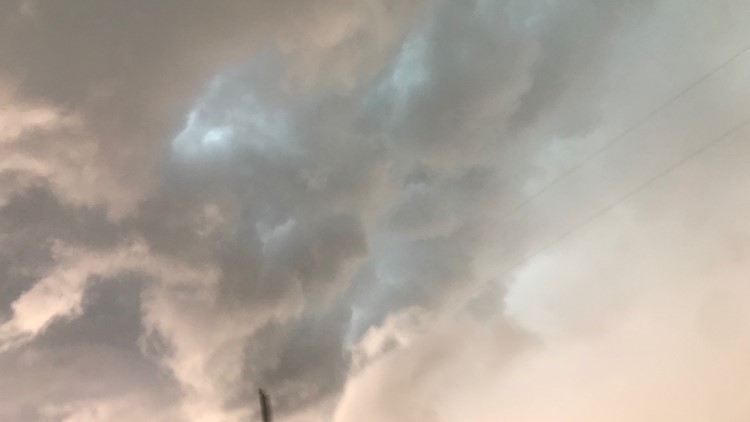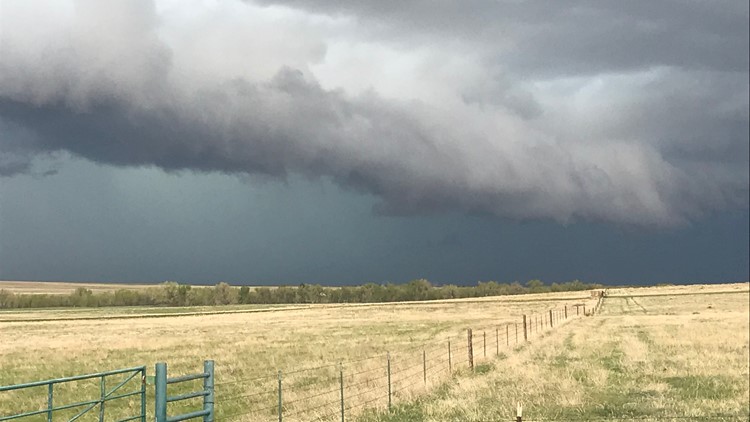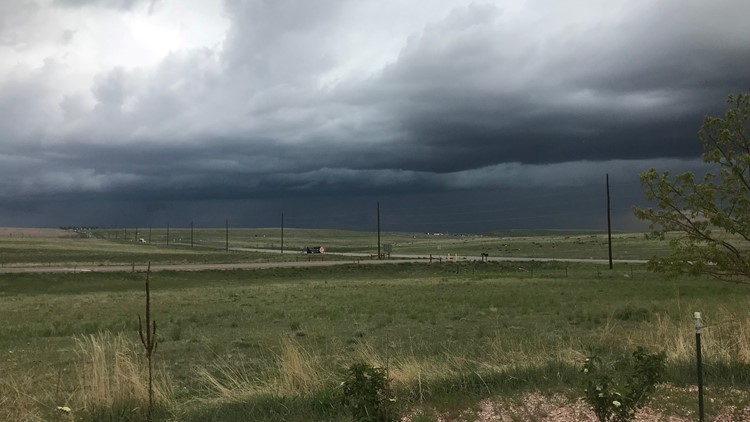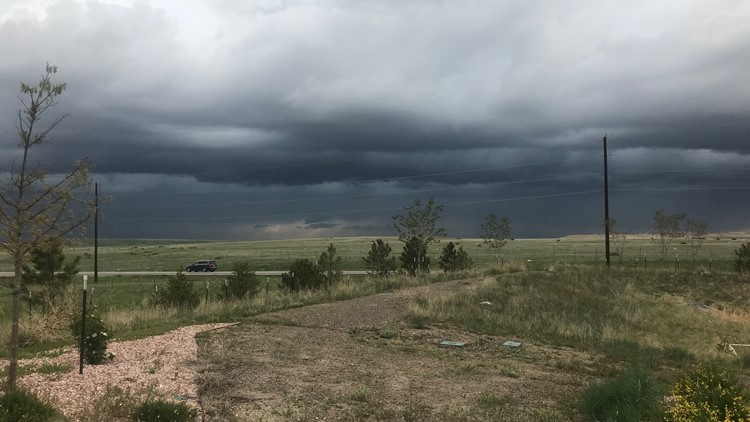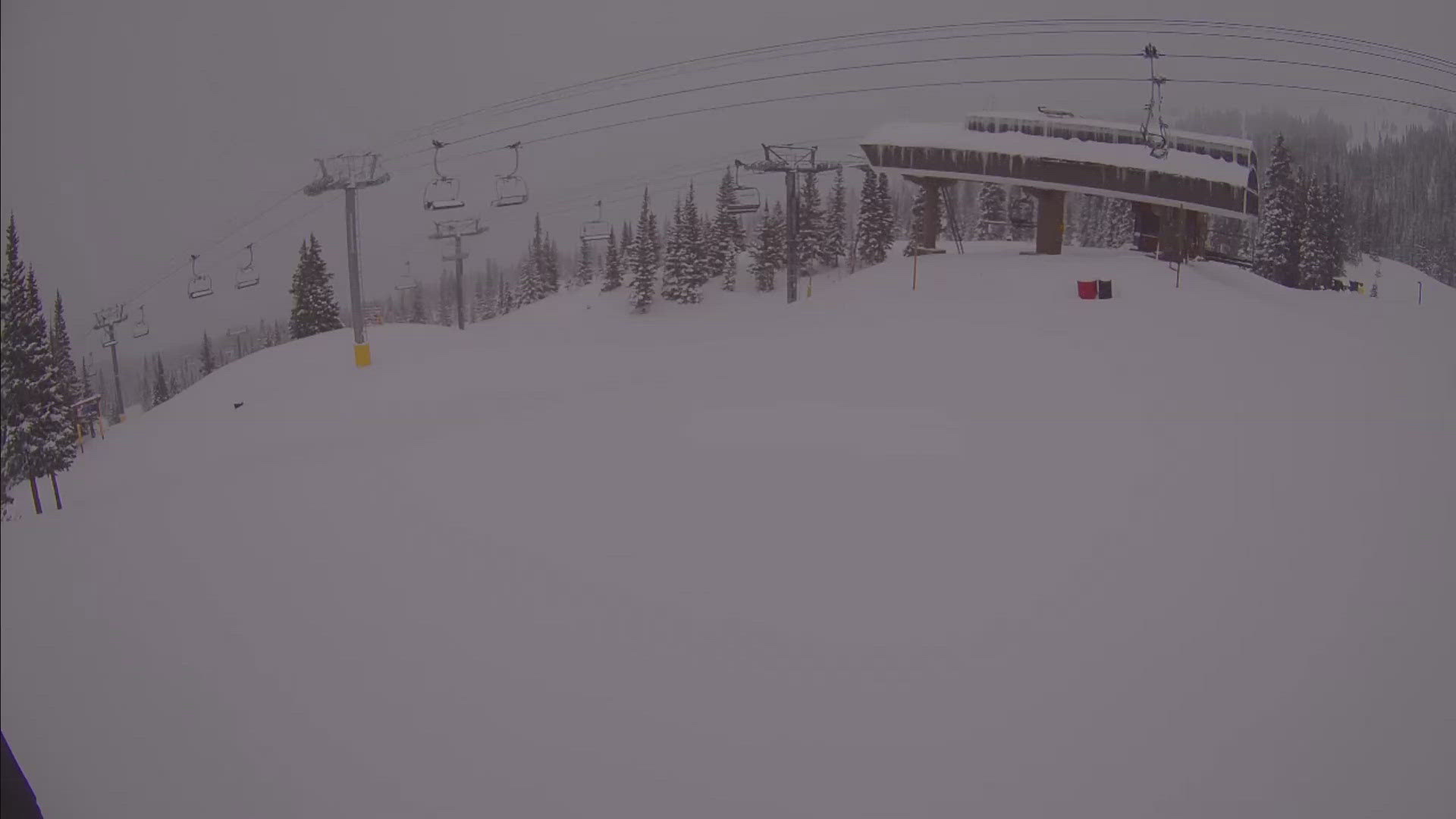The first thing I learned was not to be on the north side of the storm -- the wind can be dangerous.
Earlier this month, I went storm chasing with 9NEWS Meteorologist and Severe Weather Journalist Cory Reppenhagen -- you've probably seen his social media posts about chasing down the various storms that roll through Colorado.
This guy is a pro. He was hired at 9NEWS not just for his meteorological expertise, but also his ability to chase after a storm all day for those perfect pictures and videos.
When I hopped in the 9NEWS Weather Titan with Cory and we hit the road, we had the opportunity to chase a pair of storm cells throughout the metro beginning just before noon. (I forgot my coat.)
Storm chasing... That's like the movie "Twister" right?
No, actually, it's not. What you're seeing in the 1997 classic starring Helen Hunt and Bill Paxton is actually "storm intercepting." Common mistake (and one that I made, too).
Storm chasers keep on the outside of storms. Their whole thing is trying to keep ahead of it so they can watch it. Interceptors get right on in there -- but usually, you can't see anything, let alone twisters, because you're inundated with rain.
As an interesting side note, the National Oceanic and Atmosphere Administration will work with researchers and chasers to study tornadoes the way you see it done in the movie. The last time that happened was VORTEX 2 that was started in 2009 and ended a year later.
(The below GIF is definitely NOT how it was done in VORTEX.)
But back to the storms.
The second thing that I learned was that the earlier a storm hits, the better sign the weather won't be bad later in the day. Good weather until about 1:30 p.m. for the Denver metro is a good sign for a storm forming later.
"When the storms fire early they get a lift off from the foothills, so they can't really survive past them," Cory said as we stopped at a 7-Eleven for food.
There's no time for a sit-down meal -- you have to get going, and you have to keep moving. It's the same with storms.
Storms 101 with 9NEWS Storm Chaser Cory Repp
Cory told me that if a storm stops moving, it'll likely wilt. And starting at noon the cell we were chasing began to move -- but it wasn't alone. The cell we focused on was moving over Lakewood at the time we were watching it, and it had a neighbor to the south over Castle Rock.
I was told that the clouds over Lakewood were just 34,000 feet in the air. I didn't really start seeing any action until they pop, above 40,000. Then the real storms hit.
Cory explained that modern storm chasers in Colorado get started in the metro area and then go out east to wait for the storms. 9NEWS, he said, watches storms as an obligation to our largest population center. The area is so strange -- specifically Parker and Fort Lupton, that a tornado warning could be issued before those places even see a severe thunderstorm warning.
We drove through the metro, starting at the station on Speer and Logan and then moving out past the Cherry Creek Reservoir to somewhere near an Arapahoe County Sheriff's Office substation.
Cory got out his camera to get a time-lapse of the clouds.
The electricity was not just in the clouds at this point, either. As storms formed, the storm-chaser got a little energy to him as well. The excitement in his voice was palpable as he talked about a time-lapse of cloud movement. He’s not a glutton for punishment -- these storm chasers do not root for a town to be leveled. It’s more like a sports game.
They know the rules, the players and how things are expected to turn out. It’s when things get unexpected or their predictions ring true -- there’s no better time. We watched two storm cells moving toward each other for a half an hour. The closer the two cells got, the weaker the storm got. One cell, the visibly smaller, issued a T-storm warning from the National Weather Service.
Despite its size, it was more powerful than the one over the metro, and it was much more imposing to look at. The clouds went from gray to dark gray to a deep shade of purple. Cory kept calling it "gnarly."
We're not alone out here
The next thing I learned about storm chasing is that there are plenty of other storm chasers out there, too. I had no idea -- but I'm not really a part of the culture.
Cory called them "May chasers." He said a lot stay in hotels and others bring camping gear. They take the month off to chase storms.
Most are aware they'll be spending a bunch of money on gas, food and lodging,but they don't care. He said there's an app where each storm chaser can turn on a beacon so everyone knows where they are.
And as far as selling storm vids?
"You can also sell video, but it's not a great money-making scheme," Cory said.
Most storm chasers are just photographers that get an itch. Cory said it likely happened while they experienced a storm and felt they needed to get more of it. So, not to harp on Twister here, but kind of like Helen Hunt's character Jo (without the whole "father sucked into an F5 tornado thing").
We ran into a couple storm chasers as we got out onto the plains. They were driving the opposite way we were. Cory thought they figured they were hoping to get THE weather video. The hero video of the storm. He was supremely skeptical. The dirt roads we were heading past would flood once the storm hit.
And, I learned, it's tough to see a storm if caught in it.
So on we went. We met up with another dozen chasers outside Limon (that's where the main story image comes from) -- then another dozen a little farther east down Interstate 70.
Let's see what it looked like...
Yep. That's about it.
The long haul of storm chasing
Probably my least favorite thing about storm chasing was the lack of cell signal. It can make it hard to access radar to see which way the storm is moving and where the best spot might be.
Cory was able to get an intermittent cell signal and took us way, way, way into farm country. Like single-lane-dirt-road-surrounded-on-all-sides-by-farms-as-far-as-the-eye-could-see ... farm country.
But we were ahead of the storm on its southeast side. The images were incredible.
Photos: Storm chasing with Cory Reppenhagen
And, to be honest, they were a little scary. I don't know if that's because the cloud cover was so heavy, it felt like we were nearing the end of days -- it wasn't nighttime, per se, but more like really dark out.
If you've ever been directly under a big storm cloud, you know what I'm talking about.
It was around 5:30 p.m. at this point. Storms only really live until the early evening hours, Cory said, so if this thing was going to produce a tornado, it needed to be soon.
Then I saw this thing forming out my passenger window:


It may not be super easy to tell in two dimensions, but that jagged cloud was out on its own and moving kind of quickly. There was a little rotation for a few seconds. Thankfully, it gave up and no twister formed.
Cory was never worried.
Then I noticed a skull in the clouds and started feeling a little superstitious.


Like am I the only one to notice the two clear eye sockets and mouth there?
At this point, we'd been driving through farmland for over an hour. Fifteen minutes after seeing the evil skull cloud, I learned what a dustnado was as the thing sped across the road in front of us, slamming the hood of the 9NEWS Weather Titan with grass and dirt.
It was a good sign we might see an actual "cinnamon bun" or funnel cloud, Cory said.
I ended up seeing so many dustnadoes that they became perfunctory. Wind howled, dust blew, and we didn’t see a single tornado. Cory said we got to see a fantastic storm. And to be fair, the thing chased us from downtown Denver all the way to western Kansas.
At 6:30 p.m., we road into the storm. We kind of had to, as it had overtaken us. We were searching for reported softball-sized hail. That's 4-inch hail.
Unfortunately, we didn't find any -- but I did get to see a double-rainbow and full rainbow near Sharon Springs, Kansas.
The journey home
It was 7 p.m. The sun was shining as the storm moved onto Kansas to cause more trouble. We were in the middle of nowhere.
There was only one thing on my mind -- and it was the 7-Eleven we stopped in at 11 a.m. The last time I'd eaten. Suddenly, I understood another scene from Twister:
And there wasn't any on the way home -- just a few gas stations. We drove up U.S. 40 to reconnect with I-70 and continue the long haul back to Denver.
By the time we got back to the station, it was about 11 hours after we'd first left. I was ... exhausted.
But pumped. Storm chasing, for all the downtime and that achingly long return trip, was awesome.
Cory and I got back and he began unloading the Titan. He'd be heading back out the next day in search of that perfect shot with likely dozens of other storm chasers on the roads as well.
God speed, y'all.
(I realize that's not a Twister GIF, but it fit)


